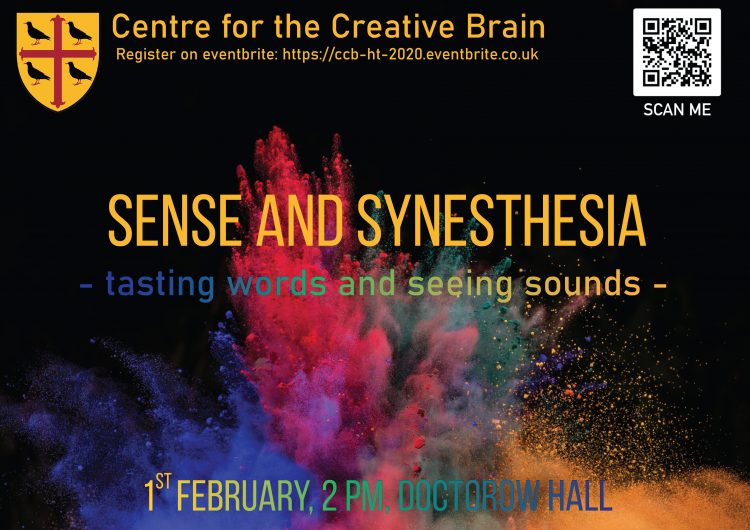Sense and Synesthesia: Centre for the Creative Brain
Event

Synesthesia occurs when experiencing one type of sensory stimulation, like hearing a sound, is involuntarily associated with a second type of sensory stimulation, like seeing a colour or feeling a certain taste. Synesthetes are often unaware of how much differently they are experiencing life and they are also more likely to participate in creative activities.
In this afternoon event, there will be three amazing scientists who will present their exciting research on synesthesia.
Prof. Julia Simner from the University of Sussex will talk about her research into the neuroscientific bases of synesthesia by working with grapheme-colour synesthetes, people who see words and letters as colours.
Prof. Michael Banissy from Goldsmiths, University of London, will bring equipment from their stand at the Royal Society Summer Science Exhibition for a hands-on experience on what mirror-touch synethesia feels like. This rare type of synesthesia is characterised by people who can feel tactile sensations on their body when they see them happening on someone else.
Prof. Charles Spence, winner of the 2008 IG Nobel Prize for Nutrition for the ‘sonic crisp’, will explain how better understanding of the human mind will lead to the better design of multisensory foods, products, interfaces and environments in the future.
As a special guest, we will have James Wannerton, the president of the UK Synesthesia Association, who will talk about his experience of having lexical-gustatory synesthesia. Spoiler alert: each stop on the London tube map has a different taste!
Drinks will be served after the talks.
The event is free and open to all. We welcome undergraduates, postgraduates, parents, academics, scientists, synesthetes and all curious people.
The Centre for the Creative Brain is generously supported by St Edmund Hall and the Wellcome Centre for Integrative Neuroimaging, University of Oxford.
Event Details
Date: 1 Feb 2020 (Sat)
Time: 14:00 - 18:30
iCal:Export
Location: Doctorow Hall, St Edmund Hall, Queen's Lane, Oxford, OX1 4AR
Categories
Accessibility
If you have any accessibility requirements, please contact the event organiser.